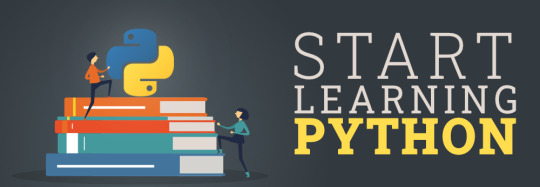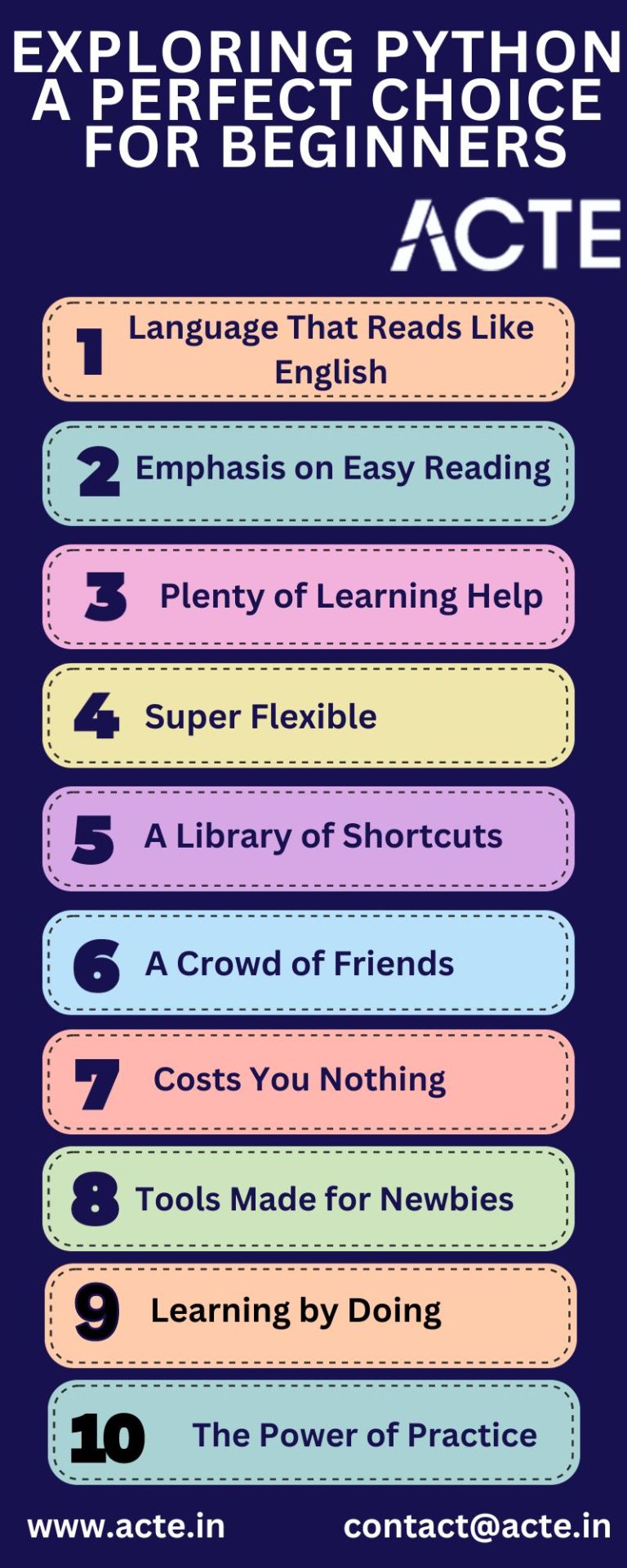#python for beginners notes
Explore tagged Tumblr posts
Text

December 14, 2024 • Saturday
Counting down until the new year: 17 days to go!
Today was. I don't know whether it was productive or unproductive. I started studying the amazing beginner's guide to git by @moose-mousse and now it's not longer intimidating! But then guests arrived and all my plans of studying psych notes and python went down the drain lolll. I need to complete them along with tomorrow's tasks ugh
🎧 MANIAC — Stray Kids

#dailyfoxposts#studyblr#studyblr tag#codeblr#studyspo#study#note taking#compblr#psychology#uni life#academia#uniblr#undergrad#student#study motivation#inspo
71 notes
·
View notes
Note
hi!! do you have any free resources or textbooks for learning python? i’m doing my dissertation and i need a refresher before i start doing it properly. thanks!!
Hiya! 💗
Here you go:
Book
Python Objects and Classes
Roadmap.sh
Random Python Resources
Top 20 Python Projects for Beginners to Master the Language
Free Programming Books
Python Notes and Resources by @trialn1error
Python Official Roadmap
Python Project List
Python 3 Cheat Sheet
Python Cheatsheet for Beginners
These are the ones' I've shared on my blog over the years! Hope their helpful! 🥰👍🏾💗
#my asks#resources#python resources#codeblr#coding#progblr#programming#studying#studyblr#learn to code#comp sci#tech#programmer
338 notes
·
View notes
Text
Epithets, Explained

Introduction
──────────────────
I’m just making this post to help explain exactly what epithets are, how they’re used, and the different types. I know that for beginners, getting a hold of all the terms used in relation to deity worship and/or work can be tough, and I’ve seen this subject trip people up in the past when they read about certain deities or translations of ancient texts.
For a quick definition, epithets are “an adjective or descriptive phrase expressing a quality characteristic of the person or thing mentioned”. In relation to epithets of deities, you might also see them called ‘surnames’ and they're basically nicknames or bynames to refer to specific aspects or forms of a deity. Typically, they’re used alongside the actual name of the deity but there’s also plenty of times where only the epithet is used, such as calling Apollo by simply “Phoebus” and not “Phoebus Apollo” or calling Athena by only saying “Pallas”. This happens a lot in texts like the Iliad or the Aeneid where using the full name paired with the epithet every time would eventually end up sounding too repetitive but also, to ancient people, certain epithets would have been easily recognizable on their own and they wouldn’t need to have the actual name given. They can come before or after a deity’s actual name, order doesn’t really matter, it’s just whatever grammar rules you’re following.
Types & Examples
──────────────────
Generally speaking, there are four main types of epithets used in polytheistic religions: regional, functional, syncretic/fusion, and poetic. And just as a note; most of my religious experience is with Greek, Roman, and Gaulish religions so that’s where I’m gonna be getting most, if not all, of the examples used below.
The categories are, for the most part, arbirtrary but can be helpful when understanding epithets in a general sense when you come across them. Some types overlap with each other, for example, Dionysos Melanaigis (lit. Dionysos of the black goatskin) refers jointly to a functional/cultic role his worship played in a ritual during the Apaturia festival in Athens AND to a story in myth where he wears a black goat skin and comes to the aid of a guy named Melanthus (which is the mythic explanation for why he’s worshipped during Apaturia) but it makes Melanaigis a regional epithet (only used in Athens), a functional cult epithet (was only during rites to him for a specific event) and a mythic epithet (as it refers to a specific mythic event). Similarly, there's examples with Apollo; Delphios Apollo refers to both the form of Apollo specifically in Delphi (regional epithet) AND to Apollo in his function as an oracular deity of prophecy (functional), and Pythian Apollo refers to Apollo around the area where he slayed the mythical Python (so both a reference to myth as well as regional, in this case referring to the area around Delphi) and also functional, since it can refer to his oracular function.
Additionally, epithets can be shared by multiple deities, “Phoebus” was used to refer to both Apollo and Helios, “Antheia” was both the name of a standalone deity as well as an epithet to Hera and Aphrodite, “Bacchus” was an epithet for the Etruscan god Fufluns and to Dionysus and would eventually become to go-to byname for Dionysos in Rome. There are also epithets such as “Aetnaeus” which refers to any number of deities associated with Mount Etna, including Zeus and Hephaestus, and “Eleutherios” which could refer to Dionysos, Zeus, or Eros.
i. Regional Epithets
──────────────────
The first type is regional or locative/toponymic epithets. These are used when referencing a form of a deity that is unique to a certain place for whatever reason or originated there. Sometimes deities will have unique local forms because of the inevitable variations of religion in any given culture (no religion is or was a monolith) and there may or may not be pseudo-historical/mythical reasons for the specific local variation. But it's pretty much just saying “the form of this deity that resides in Town A” or “the form of this deity representing a specific thing they did at this site”, examples include:
➻ Diana Nemorensis — literally: “Diana of Nemi”, used specifically to refer to her cult at Lake Nemi and was the form of Diana celebrated there during Nemoralia.
➻ Apollo Palatinus and Apollo Delphios — literally: “Apollo on the Palatine” referring to the temple built to him on the Palatine Hill in Rome by Augustus, this form of Apollo was also Augustus’ personal protector. Apollo Delphios was mentioned earlier but it refers to the oracular-centric form of Apollo in Delphi.
➻ Artemis Ephesus — literally: “Artemis of Ephesus”, refers to a form of Artemis unique to the city of Ephesus who had a very different representation to the other forms of Artemis. This manifestation of her was transported to multiple other cities such as Massalia and it was a form that was a sort of mother-goddess.
➻ Zeus & Hephaestus Aetnaeus — literally: “of Mount Etna”, for Zeus it refers to the form of him which has a small shrine and festival there and for Hephaestus, it refers to where he has his workshop.
ii. Functional Epithets
──────────────────
These epithets are ones that reference a specific (often cultic) function of the god. Many deities have multiple roles or concepts they embody and have domain over, so epithets can be used to zero-in on just the side of a deity relevant to why you’re praying to them or giving offerings. There are also festival-specific epithets which can be used on specific festivals in honor of that aspect of the given deity. Some examples include:
➻ Hercules Olivarius & Hercules Augusti — literally: “Hercules of the Olive Merchants”, referring specifically to his ability to guard the olive industry in Rome and also “Hercules of the Emperor” which was used to refer to the aspect of Hercules that guarded Roman emperors. (Gotta say, if I had to choose, it's Olive-Merchant Hercules every time for me)
➻ Hermes & Apollo Theoxenios — literally: “of the Theoxenia festival” and was the name used to invoke both Hermes and Apollo during that specific festival.
➻ Aphrodite Areia — literally: “Warlike Aphrodite” or “Aphrodite of War”, used to call specifically on Aphrodite’s war function.
➻ Apollo Acestor & Apollo Kataibates — literally: “Apollo the Healer”, was used when calling on Apollo to aid in healing, and Apollo Kataibatês literally meant “Apollo, Protector of Travelers” (also used for for Hermes) and was used by people to thank him for a safe journey or to ask for protection on a journey they were about to take.
➻ Poseidon Isthmia — literally: “Poseidon of the Isthmian Games” which was used only to call on him during this athletic festival.
➻ Ceres Legifera — literally: “Ceres, Keeper of the Laws (of marriage)”, was used to invoke her in marriage processions and during the confarreatio (a type of Roman marriage ritual where the couple eats a cake made with sacred wheat)
iii. Syncretic Epithets
──────────────────
Another form of epithets are those that serve to equate or combine deities. Oftentimes, foreign deities from one culture may transform into epithets of deities from other cultures or two deities within a single culture might be combined into one. This was especially common with Iron-Age Celtic deities in places that adopted aspects of Roman and Greek religion due to being governed by or just from existing in close proximity to them. Within Greek religion, it was common for more “archaic” or minor deities to become epithets of deities that held more cultural prominence. Some examples include:
➻ Apollo Grannus, Apollo Maponos, & Apollo Belenos — Grannus, Maponos, and Belenos were all standalone deities in Gaulish culture that became associated with Apollo once Roman religious influence spread. Each has their own unique nuance but all seem to be related to Apollo’s healing function
➻ Mars Condatis & Mars Toutatis — Both Condatis and Toutatis are also independently attested Celtic gods and both were interpreted to be a form of Mars. Through some of his Celtic epithets, Mars gained a traditionally uncharacteristic healing function.
➻ Sulis Minerva — Sulis is a Brythonic healing goddess and through her identification with Minerva, enjoyed a pretty large cult in Roman Britain.
➻ Poseidon Erechtheus — a fusion of Poseidon and a mythical king of Athens who was most likely a minor deity at some point. It would go on to be used as a name for Poseidon when in relation to Athens.
➻ Dionysos Zagreus — This is an equation that happened mostly in Orphism and other mystic cults but the earliest evidence suggests that Zagreus was originally a standalone deity or an aspect of Hades which later became an aspect of Dionysos.
➻ Mars Quirinus — Quirinus simultaneously became an epithet to Mars and also maintained an independent presence in Roman religion. It’s partly through his identification with Mars that the latter started to be more warlike as opposed to an agricultural deity.
➻ Pallas Athena — In some tellings, notably in pseudo-Apollodorus’ “Bibliotheca”, this name is the result of Athena taking the name of a Titaness named Pallas, daughter of Triton. Could also be a fusion of Athena and the giant named Pallas.
➻ Serapis/Osorapis/Userhapi — Userhapi and Oserapis are transliterations of the coptic name for Osiris-Apis which became Hellenized as “Serapis” under the Ptolemaic dynasty. It is the result of identifying Apis (a sacred bull turned deity during the Second Dynasty) and the Egyptian god Osiris.
iv. Poetic Epithets
──────────────────
Poetic (or literary) epithets are, well, epithets just used poetically in ancient literature. They don’t refer to cult or ritual functions and usually either are physical descriptors, compliments, or mythic achievements. It can also include any epithets used to describe mythic standing in relation to other gods, such Ovid calling Aurora “Pallantias” to signify that in his telling, she’s the daughter of the titan Pallas. They can be used in a devotional sense and in a more solely creative one to evoke a certain feeling from the reader and set a scene and they may be referred to as “Homeric epithets” as well since many come from Homeric works. Another function of Homeric epithets can be to help a line of poetry satisfy the line/format requirements of dactylic hexameter. Here's a nifty overview of the grammatical and descriptive purposes for various epithets in the Iliad and Odyssey. If you’ve ever read ancient epic poetry then you’ve encountered loads of poetic epithets, examples including:
➻ Eos Rhododactylos: literally “Rosy-Fingered Eos”, Eos Erigenia: literally “Early-Born Eos”
➻ Aphrodite Philommeides: literally “Laughter-Loving Aphrodite”, Aphrodite Eustephanos: literally “Richly-Crowned Aphrodite”
➻ Artemis Khrysenios: literally “Artemis Who Holds Golden Reins”, Artemis Keladeinos: literally “Strong-Voiced Artemis”
➻ Hermes Argeiphontes: literally “Hermes, Slayer of Argos” (a shepherd he killed in myth), Hermes Kharidotes: literally “Hermes, Giver of Joy”
➻ Hades Polysemantor: literally “Hades, Ruler of Many”, Hades Nekron Soter: literally “Hades, the Savior of the Dead"
Using Epithets
──────────────────
When it comes to using epithets in your practice, it's largely a personal choice. By no means is it something that you MUST do but, it's also not something that doesn't have a place in modern polytheism. I, for one, tend to find that it can connect my worship to a certain form/aspect of a deity (for instance, Apollo) more quickly or serve to "set the mood" more effectively. I tend to pray to epithets of him for his healing/protective/oracular roles, however, I'm not as personally connected to his musical/artistic roles so on the relatively rare occasions that I find myself wanting to invoke those aspects, using epithets related to that makes me feel closer to them. They can also be used to enhance prayers if you're someone who enjoys having very artistic wording or just wants to glorify the deity you're praying to.
Another way I like to use epithets is to create my own to use in prayers or as a devotional activity. This could mean creating new poetic epithets as compliments to a deity, creating an epithet to invoke them at a local place, or even making an epithet for a role they have in your UPG but do not traditionally have. I usually try to make them in various forms of Ancient Greek, Latin, Gaulish, or in English but you could utilize any language you feel like, it doesn't need to be the language of the ancient culture(s) where the deity was worshipped. And importantly, it doesn't need to perfect. I am certainly not fluent in any form of Ancient Greek or in Latin so it can take a while to get the correct (or even just loosely acceptable) grammatical set-up and lots of comparison with actual ancient epithets. Just for some examples, here's some epithets I've created for various deities:
➻ Dionysos Tautoteus: literally "Dionysus of Identity" but I made it to refer to him as a protector/affirmer of self-identification in relation to sexuality and/or gender.
➻ Eos Dendrokhoria & Eos Anthestephanos: literally "Eos who Dances in the Trees" to refer to when the sunrise is barely visible above the tree line (I usually pray to her at dawn and there's a forest in that direction from my house lol) and the second is literally "Flower-Crowned Eos", just a reference to her being traditionally described as wearing flowers.
➻ Sirona Lindaia: literally "Sirona of the Lake" which I made to use when praying or giving offering to her at lakes, pretty self-explanatory but I also have made a bunch of others for her such as Sirona Nantaia (Sirona of the Stream), Sirona Natrix (Sirona of the Snake), and Sirona Dumnorigana (Sirona, the Queen of the Depths).
Some Useful Resources for Epithets
For most Greek deities, you can find lists of epithets to them online on places such as Theoi.com, within classical texts such as various Homeric Hymns, epics, histories, etc. Theoi is a great site in general, however it can occasionally lack further explanation and context for epithets so if you find that one isn't clarified enough, try searching it up independently.
Wiktionary.com is actually a really great free resource for looking up etymology and the ways different words are/were used in various languages.
For other languages, check things such as epigraphy [for example, CIL databases (Latin) or this EDH CIL database (across the Roman sphere), RIB databases (Roman Britain), IG databases (Greek)], curse tablets, papyri, etymological dictionaries or regular dictionaries. These can be really useful for obvious reasons. For non-Latin Italic languages and ancient Celtic languages, I tend to use etymological/reconstructed dictionaries this for Celtic languages and this for Etruscan. But again, you can make epithets just in the language you already speak, there's no need for them to be in some ancient or reconstructed one. Its literally whatever you want.

This was originally a blogpost of mine on the P&W Amino but has been reformatted for (and reshared) here since amino is heading towards its inevitable end... rip
#cultus deorum#hellenism#roman polytheism#polytheism#greek polytheism#helpol#greek pantheon#gaulpol#gaulish polytheism#deity worship#deity work
181 notes
·
View notes
Text



மலர்விழி || eyes like flowers || codeblr & studyblr

malar -she/her - minor
✰ substack ✰
✰ looking to be in the computer science field
✰ very much a beginner </3
✰ tamil nri (living in the united states)
✰ self-determinism is a human right

projects:
✰ language
- start up language journal - translate a song
✰ html & css:
- personal blog (neocities)
✰ python
N/A
✰ javascript
N/A
✰ miscellaneous
- set up obsidian - visual novel story boarding - read & take notes on 'The Argumentative Indian' - read & take notes on 'White Tears/Brown Scars'

#Im not sure how often I'll be active but I did wanna get this set up!#studyblr#codeblr#progblr#malar's posts#tamilblr
9 notes
·
View notes
Text
Beginnings (13/06/2024)
Okay story-time. Last summer, sometime in late July, I (Sam) started playing Warhammer 40k, as part of a large group of people who all started playing at my pub. My faction of choice was Orks, because frankly, they are simple to play, fun to run, have awesome minis, and (if you're as dreadful at painting as I am) easy to paint for beginners, because small mistakes fit the aesthetic.
Now many people who play 40k derive a lot of fun out of the process of rolling dice (myself included), but when you run lots of models with a variety of weapons, rolling all the dice, and counting the results can be very tedious and very time consuming, especially for high volume attacks that aren't very effective or consequential.
Luckily for me, in my spare time (Note: read as what I actually do) I moonlight as an undergraduate Physics student in the UK, and as part of my course I learn coding, probably with the intention of eventually having a career that relies on my coding skills. So I thought, rather than using one of the many fully-functional, and probably much better made Dice Rolling apps available on the Google Play Store, I would instead test my coding skills this summer (and probably into the foreseeable year to be honest), along the way possibly teaching some basic coding and statistics, and showing how the development of anything is a series of f*ck ups that eventually lead to the right result as I move from Python 3, to whatever software seems most suitable for basic app development.
I also might occasionally post some pictures of Warhammer things I've painted (badly) but who knows. For know this is Sam signing-off.
7 notes
·
View notes
Text
Free AI Tools
Artificial Intelligence (AI) has revolutionized the way we work, learn, and create. With an ever-growing number of tools, it’s now easier than ever to integrate AI into your personal and professional life without spending a dime. Below, we’ll explore some of the best free AI tools across various categories, helping you boost productivity, enhance creativity, and automate mundane tasks.
Wanna know about free ai tools
1. Content Creation Tools
ChatGPT (OpenAI)
One of the most popular AI chatbots, ChatGPT, offers a free plan that allows users to generate ideas, write content, answer questions, and more. Its user-friendly interface makes it accessible for beginners and professionals alike.
Best For:
Writing articles, emails, and brainstorming ideas.
Limitations:
Free tier usage is capped; may require upgrading for heavy use.
Copy.ai
Copy.ai focuses on helping users craft engaging marketing copy, blog posts, and social media captions.
2. Image Generation Tools
DALL·EOpenAI’s DALL·E can generate stunning, AI-created artwork from text prompts. The free tier allows users to explore creative possibilities, from surreal art to photo-realistic images.
Craiyon (formerly DALL·E Mini)This free AI image generator is great for creating quick, fun illustrations. It’s entirely free but may not match the quality of professional tools.
3. Video Editing and Creation
Runway MLRunway ML offers free tools for video editing, including AI-based background removal, video enhancement, and even text-to-video capabilities.
Pictory.aiTurn scripts or blog posts into short, engaging videos with this free AI-powered tool. Pictory automates video creation, saving time for marketers and educators.
4. Productivity Tools
Notion AINotion's AI integration enhances the already powerful productivity app. It can help generate meeting notes, summarize documents, or draft content directly within your workspace.
Otter.aiOtter.ai is a fantastic tool for transcribing meetings, interviews, or lectures. It offers a free plan that covers up to 300 minutes of transcription monthly.
5. Coding and Data Analysis
GitHub Copilot (Free for Students)GitHub Copilot, powered by OpenAI, assists developers by suggesting code and speeding up development workflows. It’s free for students with GitHub’s education pack.
Google ColabGoogle’s free cloud-based platform for coding supports Python and is perfect for data science projects and machine learning experimentation.
6. Design and Presentation
Canva AICanva’s free tier includes AI-powered tools like Magic Resize and text-to-image generation, making it a top choice for creating professional presentations and graphics.
Beautiful.aiThis AI presentation tool helps users create visually appealing slides effortlessly, ideal for professionals preparing pitch decks or educational slides.
7. AI for Learning
Duolingo AIDuolingo now integrates AI to provide personalized feedback and adaptive lessons for language learners.
Khanmigo (from Khan Academy)This AI-powered tutor helps students with math problems and concepts in an interactive way. While still in limited rollout, it’s free for Khan Academy users.
Why Use Free AI Tools?
Free AI tools are perfect for testing the waters without financial commitments. They’re particularly valuable for:
Conclusion
AI tools are democratizing access to technology, allowing anyone to leverage advanced capabilities at no cost. Whether you’re a writer, designer, developer, or educator, there’s a free AI tool out there for you. Start experimenting today and unlock new possibilities!
4o
4 notes
·
View notes
Text
6/100 days of code.
1.3.24
happy new year! im late, but it still applies
this is not a personal blog, so ill keep this brief: life happened, and c++ took a backburner. im not abandoning this project! in searching for inspiration to do this challenge before i started, i noticed that not many got very far- so ive decided in this time between the last post and now that i need to go at my own, albeit weird, pace. aka: do days as i can, and not do the catch-up thing i was doing. adhd can do that to ya. once im back on a schedule with school ill be able to incorporate c++ into my routine, whereas aside from my new job im flying solo which makes it historically difficult for me to get stuff done xP
where i left off a week ago, doing W3schools's C++ tutorial, i finished the function section, and today i began the classes section, which peaking at the section headers, made me excited. object-oriented programming is not something i learned in my intro to cs class with Python, and i know C++ does it well, so im pumped to be able to start programming with this.
unfortunately, though, the problem of it being a fairly informal educational resource does rear its head in this section, as im reading and studying this stuff, but can feel it not retaining. this website is better used as a reference resource, rather than a study one, but it is still worth studying imo as it breaks down concepts very simply. thus: im now beginning the C++ beginner course from exercism (an open source resource!!!!), which has a built in compiler, course material, and ability to get support on their discord. cool stuff! it took a minute for me to get acquainted with how it works, as i assumed the instructions were solely a repeat of the lesson, but there were. actual. instructions. beneath that lol so once i got that figured out i was able to properly solve the first exercise without issue.
the lesson material moves fast in its examples, but that is not reflected in the exercises, which was a relief as that impacted my first run, over-complicated tinkering i did before i realized there were actual values given i was supposed to input. theyre complicated but not too difficult to parse, which is a good show of what ill be learning to create as i progress.
final note though, as this is getting long: having W3schools as a resource while doing exercises material is very good, as while the first exercise i did went easily, the second one is jumping into if statements before ive had the chance to learn them from the website, so being able to refer to what they operate like was very helpful. this below is what saved me from error hell, as i had forgotten how to format them already:
im a goof and overcomplicate shit, so was not supposed to use if statements. oh well. this still helped to make it accurate lol
int myAge = 25;
int votingAge = 18;
.
if (myAge >= votingAge) {
.....cout << "Old enough to vote!";
} else {
.....cout << "Not old enough to vote.";
}
#codeblr#progblr#programming#coding#100 days of code#c++#c++ programming#learn to code#kingsoriginal#kingscode
2 notes
·
View notes
Text
Shangri-La Frontier Episode 2: A Peculiar One

Worldbuilding. Incredibly important, hard to pull off sometimes. Shangri-La Frontier seems to have zero problem with it. As it does with action, and comedy, and basically everything. It's an incredibly smooth series through these two episodes, and it gives me a lot to talk about!
So let's talk worldbuilding first. While the wolf does show up in the opening, it's actually featured somewhere else more importantly. Yeah, in the image that I used for the cover of this post.
One of the new players actually points out the emblem that adorns this massive suit of armor. That emblem being a wolf holding a sword. Hmm, interesting choice for what's noted as an "achievement focused clan". To put two and two together, the clan's chasing after the unique monster that appeared to Sunraku at the end of the episode. Mostly because after we're treated to its appearance, we've learned that zero unique monsters have been defeated.
What about sneaky boss mechanics then? Ravenous Python is the area boss that blocks beginners from making it to the second town. Forcing them into parties is a great way to foster communication and interaction in this big world, so it's a great idea for a starter boss. Even better than that though is its design, with hair/fur on the head and the tail.
Like me, Sunraku didn't really think it anything important, but we find out that the python can spew poison from its tail. Immediately, the pieces fall into place, it's a little hint/giveaway at the fact that the tail is also a weapon/danger. Very very neat detail.

Some more boss details! While it's not officially stated, while Sunraku is stacking crits on the Python, it looks like it's potentially being staggered? That is, being hit with a critical temporarily stuns/staggers an enemy which provides an additional opening. Of course, being able to stack crits means that the stagger would be overpowered, so the python recovers rather quickly.

After the python dies we finally make our way to the first (though really second) town of the series, where we get some time with different players before seeing Sunraku. Not anything crazy, but the fact that they're telling us about what denotes a PKer is pretty interesting. What they don't say though is if there's any debuffs or real purpose to killing players, and where you can do it. They're only just outside the town so there's most likely not a safe area, but is it possible for them to fight in the town? Just some random thoughts I got from the episode.

So, Sunraku's in the second town now, and because he's died and has a skill penalty, he's decided to do some shopping. Really plain and simple idea, but they show off the armor he purchases as being from Mud Frog's, which are a rather simple/passive mob with a gimmick in the area. Really great idea for starter items, since they're easy to farm and only provide specific/simple defenses. Also, Mud Frog's another monster name from FFXII (though it doesn't bare any resemblance). Starting to think that the author might have a favorite game.

And this is where things start to get interesting with the world. When the NPC blacksmith says that nighttime's dangerous, they mean it. I love this idea and how they execute on it, starting with a Redcap Goblin. It might not have the iron greaves that typically denote a Redcap (though Overlord's do have them), it's still undeniably inspired by the D&D monster.

Even more interesting is the approach. It wears more complicated clothing than the beginner Goblin, sporting a necklace even as decoration. Further, it has a proper metal axe, a weapon even nicer than the blades of the Vorpal Bunnies in terms of quality.
The icing on the cake though is its intelligence. It's got a fighting style that can resemble the reckless abandon of the original goblin, but has far more refinement and a much more intense attack pattern, featuring things like even throwing their axe.
One step above that is how they treat the creatures of the night. This thing is clearly intelligent as it summons allies to its side. Like Sunraku says, this is typically a weak monster's trait, but when applied to a high level one makes them even more dangerous, essentially enforcing a time limit on the fight for viability. Really really cool stuff that doesn't just use overpowered monsters to make the night difficult. It ups the intelligence of them in several ways, arguably the most notable being the fact that these monsters roam at night when there's less people (making it safer for the monsters). Really really cool ideas.
Anyways, the episode itself is really really impressive in a lot of ways like I said before. The humor hits well and is balanced with the game talk and interaction, the story builds slowly and surely about the norms in regards to partying up and interaction (which is something Sunraku doesn't get in their experience with other games), the action is impeccably paced and the choreography is truly impressive, and the camera work is just insane, the tricks and ideas they implement in its movement are really really great. C2C is standing tall on all fronts with Shangri-La Frontier, poised to make it a remarkable and memorable experience.
#shangrila#shangri la frontier#shangri-la frontier#c2c#studio c2c#c2c studio#vrmmo anime#isekai anime#anime review#anime and manga#anime#anime recommendation#anime reccs
4 notes
·
View notes
Text
Exploring Python - A Perfect Easy Language Choice for Beginners
Python is a popular programming language, and it's particularly known for being easy to grasp. But why is Python a common recommendation, especially for people who are new to programming?

1. Language That Reads Like English:
Python stands out because when you read Python code, it looks a lot like the English language. It doesn't use complex symbols or strange commands. Instead, Python uses words and phrases that you're already familiar with.
2. Emphasis on Easy Reading:
Python places a strong emphasis on making code easy to read. This means that not only is your code easy for you to understand, but it's also simple for others who might work on your code. This focus on readability is like having a friendly guide that helps everyone who deals with the code.
3. Plenty of Learning Help:
Starting something new can often be intimidating, but Python makes the learning process more accessible. There's a wealth of resources available to help you learn Python. These resources include official documentation, tutorials, online courses, and forums. It's like having guidebooks, teachers, and fellow learners who are ready to assist you. Python's vast learning support network ensures you're never alone on your learning journey.
4. Super Flexible:
Python is an incredibly versatile programming language used in various domains. It's employed in web development, data analysis, artificial intelligence, and more. Learning Python opens doors to a wide range of career opportunities, just like a master key unlocks many doors.
5. A Library of Shortcuts:
Python boasts an extensive standard library that includes pre-written code for various common tasks. This is like having a collection of shortcuts to simplify everyday coding tasks. These pre-written pieces of code can save you a great deal of time and effort when you're building applications.
6. A Crowd of Friends:
Python has a vast and active community of developers. These Python enthusiasts hang out online, answering questions, sharing tips, and making sure you're never stranded for too long when you encounter programming challenges. It's like being part of a giant, friendly classroom where help is always at hand.

7. Costs You Nothing:
Learning Python doesn't come with a price tag. Python is open-source, which means it's entirely free to use. You can download and install Python on your computer without spending any money, similar to finding a cool toy without having to make a purchase.
8. Tools Made for Newbies:
Python also offers beginner-friendly integrated development environments (IDEs) like IDLE and user-friendly code editors like Visual Studio Code. These tools are designed to make the coding process simpler and less intimidating for beginners, much like having training wheels on your first bicycle.
9. Learning by Doing:
Python strongly encourages hands-on learning. It's similar to learning to cook by actually cooking. With Python, you can start writing and executing code right away, gaining practical experience that accelerates your progress.
10. The Power of Practice:
While Python's simplicity is a significant advantage for beginners, mastering any programming language still requires practice. It's comparable to learning to play a musical instrument. You might hit a few wrong notes at first, but with practice, you'll play beautiful music.
In summary, Python is not tough to learn, especially for beginners. Its user-friendly syntax, readability, extensive resources, and supportive community make it an excellent choice for those starting their programming journey. Remember, with dedication and practice, you can master Python and open doors to a world of coding possibilities.
If you're eager to start your Python learning journey, consider exploring the Python courses and certifications offered by ACTE Technologies. Their expert instructors and comprehensive curriculum can provide you with the guidance and knowledge you need to become proficient in Python.
2 notes
·
View notes
Text
Best Development Software for Programmers in 2025
Technology is evolving fast, and so are the tools developers use. Whether you're a beginner or an experienced coder, the right software can boost productivity and streamline your workflow. Here are the best development software options for programmers in 2025.
1. Visual Studio Code (VS Code)
VS Code remains the top choice for developers. It’s lightweight, highly customizable, and supports various extensions for different programming languages. With built-in Git integration and AI-powered suggestions, coding has never been smoother.
2. JetBrains IntelliJ IDEA
For Java developers, IntelliJ IDEA is still the best. It offers intelligent code completion, advanced debugging tools, and seamless integration with frameworks like Spring and Hibernate.
3. PyCharm
Python developers love PyCharm for its powerful debugging, smart code navigation, and built-in support for Django and Flask. It speeds up Python development and improves code quality.
4. GitHub & GitLab
Version control is essential for teamwork, and GitHub and GitLab are the top platforms for managing repositories. They offer CI/CD pipelines, issue tracking, and collaborative coding features.
5. Docker
With Docker, developers can create, deploy, and manage applications in containers. It ensures a consistent environment across different machines, making DevOps workflows smoother.
6. Postman
For API development and testing, Postman is a must-have. It simplifies API requests, automates tests, and supports collaboration among team members.
7. Figma
While primarily a design tool, Figma is great for frontend developers working on UI/UX. It allows real-time collaboration with designers and generates CSS code snippets for easy implementation.
8. Notion
Organizing projects and documentation is crucial. Notion is a powerful tool that combines note-taking, task management, and collaboration, making it a favorite for developers.
Conclusion
Choosing the right development software depends on your needs and programming language. The tools above are among the best for coding, collaboration, and efficiency in 2025. Try them out and level up your development workflow!
What’s your favorite development tool? Let us know in the comments!
0 notes
Text
New Post has been published on RANA Rajasthan Alliance of North America
New Post has been published on https://ranabayarea.org/generative-ai-course/
generative ai course
Regulations governing training material for generative artificial intelligence
LinkedIn sued for allegedly training AI on private messages
LLMs have also been found to perform comparably well with students and others on objective structured clinical examinations6, answering general-domain clinical questions7,8, and solving clinical cases9,10,11,12,13. They have also been shown to engage in conversational diagnostic dialogue14 as well as exhibit clinical reasoning comparable to physicians15. LLMs have had comparable strong impact in education in fields beyond biomedicine, such as business16, computer science17,18,19, law20, and data science21. Social platforms like Udemy and LinkedIn have two general kinds of content related to users.
Survey: College students enjoy using generative AI tutor – Inside Higher Ed
Survey: College students enjoy using generative AI tutor.
Posted: Wed, 22 Jan 2025 08:01:50 GMT [source]
The best generative AI certification course for you will depend on your current knowledge and experience with generative AI and your specific goals and interests. If you are new to generative AI, look for beginner-friendly courses that provide a solid foundation in the basics. If you are more experienced, consider more advanced courses that dive deeper into complex concepts and techniques.Ensure the course covers the topics and skills you are interested in learning. Also, consider taking a course from a reputable institution or organization that is well-known in AI.
Become a Generative AI Professional
AI is still a powerful tool for exploring ideas, finding libraries, and drafting solutions, he noted, but programming skills in languages like Python, Go, and Java remain essential. Programming isn’t becoming obsolete, he said, AI will enhance, not replace, programmers and their work. For now, Loukides said, computer programming still requires knowledge of programming languages. While tools like ChatGPT can generate code with minimal understanding, that approach has significant limitations. Loukides said developers are now prioritizing foundational AI knowledge over platform-specific skills to better navigate across various AI models such as Claude, Google’s Gemini, and Llama. Greg Brown, CEO of online learning platform Udemy, echoed what Coursera officials have seen.
Programming isn’t becoming obsolete, he said, AI will enhance, not replace, programmers and their work.
GenAI revolutionizes organizations by enhancing efficiency, automating routine tasks, and enabling innovation through AI-driven insights.
Not to mention, using artificial intelligence to make my dreams of having a twin come true — all in a matter of a few clicks.
The initial step involves conducting a skills assessment to comprehend the current capabilities of the workforce and identify any gaps. Following this, companies can create customized AI learning modules tailored to address these gaps and provide role-specific training. It leverages its ability to generate new ideas and solutions, allowing businesses to explore creative problem-solving methods that were previously impossible. For example, GenAI can be used to create new product prototypes by simulating various design models or conducting data-driven market analysis to predict consumer trends.
It offers the potential to fundamentally reimagine our approach to health, shifting our focus from treating illness to fostering wellness. Safeguarding sensitive data is paramount for healthcare organizations, so laying the groundwork for AI-driven healthcare means implementing robust security features and processes that protect data as it’s being applied to derive actionable insights. Over the last 30 years, he has written more than 3,000 stories about computers, communications, knowledge management, business, health and other areas that interest him.
Why Learn Generative AI in 2025?
Machine Learning (ML) is a subset of AI that learns patterns from data to make predictions. And generative AI is a subset of ML focused on creating new content like images, text, or audio. In conclusion, generative AI holds immense potential to transform industries and the way we interact with technology. While it presents exciting opportunities, it also comes with its own set of challenges.
But Kian Katanforoosh, CEO Workera, an AI-driven talent management and skills assessment provider, said people aren’t less interested in learning programming languages — Python recently surpassed JavaScript as the most popular language. Instead, there’s been a decline in learning the specific syntax details of these languages, he said. Demand for generative AI (genAI) courses is surging, passing all other tech skills courses and spanning fields from data science to cybersecurity, project management, and marketing.
Master the art of effective prompt crafting to harness generative AI’s full potential as a personal assistant. The best course for generative AI depends on your needs, but DeepLearning.AI’s GANs Specialization and The AI Content Machine Challenge by AutoGPT are highly recommended for comprehensive learning. With numerous high-quality courses available, you can find one that fits your needs and helps you achieve your goals. From generating realistic images to composing music and writing text, the applications are vast and varied.
Learnbay: Advanced AI and Machine Learning Certification Program
Both Generative AI and Machine Learning are powerful subsets of AI, but they differ significantly in terms of objectives, methodologies, and applications. While machine learning excels at making predictions and decisions based on data, generative AI is specialized in creating new, synthetic data. The choice between the two largely depends on the specific needs of the task at hand. As AI continues to evolve, we can expect both fields to grow, offering more advanced and nuanced solutions to increasingly complex problems. Generative AI refers to a subset of artificial intelligence that focuses on generating new content, such as images, text, audio, and even videos, by learning from existing data. Unlike traditional AI models, which focus on classification, prediction, or optimization, Generative AI models create entirely new data based on the patterns they’ve learned.
With guidance from world-class Wharton professors, it’s an excellent choice for business professionals aiming to leverage AI strategically. This learning path is a structured approach and optional practical labs make it a valuable resource for both casual learners and those seeking to earn professional badges to showcase their skills. While the course is entirely text-based, it’s available in 26 languages, ensuring a broad reach. So far, over 1 million people have signed up for the course across 170 countries. What’s more, about 40% of the students are women, more than double the average for computer science courses. Launched in 2018 by the University of Helsinki in partnership with MinnaLearn, the Elements of AI course is an accessible introduction to artificial intelligence designed to make AI knowledge available to everyone.
Generative AI for Software Developers Specialization
The integration of these technologies has shown great potential in puncture training. This specialization covers generative AI use cases, models, and tools for text, code, image, audio, and video generation. It includes prompt engineering techniques, ethical considerations, and hands-on labs using tools like IBM Watsonx and GPT. Suitable for beginners, it offers practical projects to apply AI concepts in real-world scenarios. This course offers a hands-on, practical approach to mastering artificial intelligence by combining Data Science, Machine Learning, and Deep Learning.
Your personal data is valuable to these companies, but it also constitutes risk.
I chose this course because it offers a concise and informative introduction to generative AI.
Google Cloud’s Introduction to Generative AI Learning Path covers what generative AI and large language models are for beginners.
The SKB provided students with timely knowledge to support the development of their ideas and solutions, while the PKB reduced demands on the client’s time by offering students project-specific insights.
Today, Rachel teaches how to start freelancing and experience a thrilling career doing what you love. Discover how generative AI can elevate your professional life and enrol now on one of these courses. If you want to be more effective in your work, and even boost your income as a salaried employee or freelance professional, it would be worth investing the time to get to know Gen AI better. She has published work in journals including the Journal of Advertising, The International Journal of Advertising, Communication Research, and the Journal of Health Communications, among others. Shoenberger’s research examines the impact of the evolving advertising and media landscape on consumers, as well as ways to make media content better, more relevant, and, where possible, healthier for consumer consumption. I tried MasterClass’s GenAI series to better understand where AI is headed, and how it may affect my life.
If that’s happening because users expect AI to handle language details, that could be “a career mistake,” he said. “Demand for genAI learning has exceeded that of any skill we’ve ever seen on Coursera, and learners are increasingly opting for role-focused content to prepare for specific jobs,” said Marni Stein, Coursera’s chief content officer. Coursera, in its fourth annual Job Skills Report, says demand for genAI-trained employees has spiked by 866% over the past year leading to strong interest in online learning. Over the past two years, 12.5 million people have enrolled in Coursera’s AI content, according to Quentin McAndrew, global academic strategist at Coursera. To serve the needs of the next generation of AI developers and enthusiasts, we recently launched a completely reimagined version of Machine Learning Crash Course.
Among his many interests is exploring how to combine the possibilities of online learning and the power of problem-based pedagogy. Learning generative AI in 2025 is important because it offers valuable skills for a wide range of industries, making you more competitive in the job market. By understanding how to use AI to create content, solve problems, and automate tasks, you can boost productivity and innovation.
LinkedIn Is Training AI on User Data Before Updating Its Terms of Service
Perhaps more fundamentally, we should be skeptical of any argument that solves one monopoly problem with another—after all, ChatGPT’s OpenAI is effectively controlled by Microsoft, another company leveraging its dominance to control inputs across the AI stack. You’ve probably already completed some online training or workshops detailing the benefits of artificial intelligence and talking about the essentials of prompt engineering and generative AI. Instead, this list of free courses will help you learn how to apply AI to your specific role or industry context, which makes it much more effective for you and delivers more tangible benefits than generic AI knowledge. Onome explores cutting-edge AI technologies and their impact across industries, bringing you insights that matter.
If you have no awareness that your data is being used to train AI, and you find out after the fact, what do you do then? Well, CCPA lets the consent be passive, but it does require that you be informed about the use of your personal data. Disclosure in a privacy policy is usually good enough, so given that LinkedIn didn’t do this at the outset, that might be cause for some legal challenges.
This course stands out for its emphasis on ethical AI and its accessibility across multiple languages. It’s effective for learners seeking an in-depth, structured, and entirely free resource, provided they are comfortable with a text-based format. It was created by Dr. Andrew Ng, a globally recognized leader in AI and co-founder of Coursera.
This launch marks a significant leap in generative AI technology, positioning Google as a strong contender in the AI-driven video content space. By making this model open to everyone, DeepSeek is helping developers and businesses use advanced AI tools without needing to create their own from scratch. Understanding how to train, fine-tune, and deploy LLMs is an essential skill for AI developers. This certification is specifically designed to assess your knowledge and skills in generative AI and LLMs within the context of NVIDIA’s solutions and frameworks. As a microlearning course offered by PMI, a globally recognized organization in project management, project managers can trust the quality and credibility of the content.
This 90-minute, three-part generative AI series helped me learn how to use artificial intelligence for work and everyday life. The Register asked Edelson PC, the law firm representing the plaintiff, whether anyone there has reason to believe, or evidence, that LinkedIn has actually provided private InMail messages to third-parties for AI training? LinkedIn was this week accused of giving third parties access to Premium customers’ private InMail messages for AI model training. The student surveys were fielded in fall 2024 at nine institutions as two-week regular check-ins, so student response rate varies by question. Macmillan analyzed more than two million messages from 8,000 students in over 80 courses from fall 2023 to spring 2024.
“What emerges is the opportunity for a new class of employees that perhaps weren’t available on the market before because they couldn’t do flexible hours or they couldn’t commute easily. There is a proportion of that segment of the population that is now becoming available to take on jobs that are distributed globally and contribute to the local economy,” he explained, noting higher wages lead to increased spending power. Foucaud stressed that previously, creating such integrated courses was labor-intensive and complex. However, the process has been significantly streamlined with the facilitation of generative AI.
0 notes
Text
Learn Python Programming

The best way to learn Python is by practicing examples. This page contains examples on basic concepts of Python. We encourage you to try these examples on your own before looking at the solution. All the programs on this page are tested and should work on all platforms. Whether Python is the right choice depends on what you want to accomplish and your career goals - python programming.
The future of Python and data science appears promising, given Python's commitment to developing and releasing updates to meet the demands of the data industry and emerging technologies. It has become increasingly popular among businesses across industries for data analysis and is very versatile. Python is a popular language for data processing and analysis, valued for its simplicity and ease of use for beginners and experienced programmers alike - online data science course.
Even with this ridiculous level of customisation, the same need to know principles apply, and in a way that only Python can do it. Users get to focus on what they’re doing, assisted by trusting someone else to have made the right decision about what they need to know. Clearly the complexity ramps up quickly, even at this level. But unlike most other languages, complexity does not travel down. There’s plenty more to learning Python for beginners, of course, but this should give you an idea of what’s involved. There are two distinct types of loops in Python, for statements and while statements, which are explained further below. It is worth noting both loops can be used interchangeably for any situation, they just require altered syntax or approaching the programming conundrum in a different way. Imagine all these keywords as the traffic controllers telling the control flow where to go.
Python is one of the top programming languages in the world, widely used in fields such as AI, machine learning, data science, and web development. The simple and English-like syntax of Python makes it a go-to language for beginners who want to get into coding quickly. Because Python is used in multiple fields, there is a high demand for Python developers, with competitive base salaries. For more information, please visit our site https://eagletflysolutions.com/
0 notes
Note
hey question!
im currently a data analytics major in uni and currently learning python! i’m currently doing well grasping the concepts with the reading and writing it down. however, i know its better to learn to code by actually..writing code.
I read that I should follow a random code (like a snake game or something) and then copy it and write it code for code but then change some things up etc (i hope that makes sense how im asking this)
is there any websites that show an actual code and then I can just copy and follow that to learn? or how should I go about learning to actually write code and not get stuck in “tutorial hell” ?
thank you!! sorry if this is a lot :)
Hiya!
When I was learning back 3 years ago, I did more the "watching videos + replicate the code" method to learning how to plan, build and deploy projects, even with the very beginner project videos! I didn't do much searching online for projects in maybe articles, blog posts, etc and replicate it. However, that was because I learn more in seeing than reading - that's why I'm bad at reading documentation(!) (I would search for video explainations to the documentations...).
I know on my blog I promote "don't idly watch tutorial videos all the time and actually start coding" kind of mindset but I'm not completely disregarding the benefits of watching such tutoiral videos. Seeing how other people's approach to a project idea is great! One project idea, hundreds of approaches to it!
: ̗̀➛ Tips:
Take notes while following tutorials. Write down what you learn and how you solve problems in your project. This will solidify your understanding and serve as a reference later.
Once you grasp the basics from a tutorial, experiment within your version of the project. Try modifying the code, adding features, and see what happens. This is where the real learning happens. LITERALLY HOW I LEARNED.
: ̗̀➛ Best places I can think of from the top of my head is to find projects on GitHub and maybe Dev.To by searching the project idea and someone must of done it or something similar and uploaded the project/talked about it in a blog post!
21 notes
·
View notes
Text

Top Data Analyst Course in Delhi - Advance Your Career with Expert Training
Top Data Analyst Course in Delhi: Your Gateway to a Thriving Career in Data Science
In today’s digital age, data is more than just a buzzword – it’s the backbone of every successful business decision. With organizations increasingly relying on data-driven insights, the demand for skilled data analysts has skyrocketed. If you’re looking to jumpstart your career in this high-demand field, enrolling in a top Data Analyst course is the first step. And when it comes to premier Data Analyst training, High Technologies Solutions in Delhi is your go-to destination.
Why Choose Data Analytics as a Career?
Data analysis is one of the most sought-after skills today. The ability to interpret complex data and convert it into actionable insights is crucial for businesses across every industry – from healthcare and finance to marketing and technology. As more organizations embrace big data, the need for qualified data analysts is expected to rise. By enrolling in a Data Analyst course in Delhi, you’ll open doors to career opportunities in fields such as:
Business Intelligence
Data Science
Financial Analysis
Marketing Analytics
Healthcare Analytics
Why High Technologies Solutions?
High Technologies Solutions stands out as a premier training institute offering a comprehensive Data Analyst course that equips you with the knowledge and skills required to excel in this fast-evolving field.
Here’s why you should choose High Technologies Solutions for your Data Analyst training:
1. Industry-Relevant Curriculum
The Data Analyst course at High Technologies Solutions is designed by experts with years of industry experience. The curriculum covers essential tools and techniques used in data analysis, including:
Microsoft Excel & Advanced Excel
SQL (Structured Query Language)
Data Visualization (Tableau, Power BI)
Statistical Analysis
Predictive Analytics
Python for Data Analysis
Whether you’re a beginner or someone with some experience, this course caters to all skill levels and ensures that you develop practical expertise in key data analytics tools.
2. Hands-On Training
The best way to learn data analysis is through practice. High Technologies Solutions offers hands-on training with real-world projects, case studies, and practical exercises to give you the experience needed to apply theoretical concepts in real business scenarios.
3. Experienced Trainers
High Technologies Solutions boasts a team of expert trainers with in-depth knowledge of the data analytics industry. These trainers provide personalized guidance, mentoring, and support throughout your learning journey, ensuring you gain the confidence to tackle any data analysis challenge.
4. Flexible Learning Options
Understanding the diverse needs of students, High Technologies Solutions offers flexible learning modes, including classroom sessions, online courses, and weekend batches, so you can choose the one that best fits your schedule.
5. Job Assistance and Placement Support
Completing a course at High Technologies Solutions means you’re not only equipped with technical skills but also supported by their dedicated placement assistance team. This team works with top companies to connect you with job opportunities and provides resume-building, interview preparation, and career counseling services.
Course Duration and Fees
Duration: 3 to 6 months (depending on the mode of study)
Fees: Competitive and affordable pricing with flexible payment options
Note: Special discounts and scholarships are available for early registrants!
Enroll Now and Take the First Step Toward a Successful Career
Data analysis is not just a job; it’s a career that offers immense growth potential. By enrolling in the top Data Analyst course in Delhi at High Technologies Solutions, you’re taking the first step toward a lucrative and fulfilling career in one of the most exciting fields today.
Don't wait – seize the opportunity to unlock your future in data analytics!
0 notes
Text
Python - Free Resources
https://programiz.pro/learn/master-python
Programiz - Free walk through lessons on the very basics, 8/10 because it had good explanations but the free portion of the course was very short
https://inventwithpython.com/invent4thed/
https://inventwithpython.com/pygame/
https://docs.python.org/3.13/tutorial/index.html
Resources I'm using rn to learn how to code as an absolute beginner - I'll add notes later for each link with descriptions and how useful I found it
#going to update this whenever I find something else I find useful#I'll probably add some youtube videos at some point#learning to code#coding#python
0 notes
Text
TensorFlow is a powerful machine learning framework for deep learning. This open-source tool has changed the speed of development in the supervised machine learning area. Using TensorFlow for training machines learning model is very common these days. Large machine learning leader companies are already using TensorFlow on a large scale. Learning TensorFlow has also become super convenient these days with a ton of free tutorials and courses online. I have compiled a list of the best free online resources that will help you learn TensorFlow quickly. Note: Foundation Courses TensorFlow is a specialized machine learning environment that focuses on supervised machine learning. In case you are an absolute beginner in ML space, you may find this list of ML tutorials handy Free YouTube Courses On TensorFlow YouTube is full of useful videos, however, it gets really hard to find in-depth courses that may be worth your time. Below is a shortlist of best courses to learn TensorFlow on YouTube, some of them are also advertisement free. TensorFlow in 5 Minutes | Introduction To TensorFlow | Deep Learning Using TensorFlow | Edureka - YouTube TensorFlow 2.0 Complete Course - Python Neural Networks for Beginners Tutorial - YouTube Keras with TensorFlow Course - Python Deep Learning and Neural Networks for Beginners Tutorial - YouTube Coding TensorFlow - YouTube TensorFlow 2.0 Crash Course - YouTube TensorFlow Tutorials - YouTube TensorFlow 2.0 Tutorials for Beginners - YouTube Introduction to TensorFlow 2.0: Easier for beginners, and more powerful for experts (TF World '19) - YouTube Coursera Courses On TensorFlow Coursera a popular choice for online courses. Below are some courses available on Coursera. TensorFlow in Practice | Coursera Machine Learning with TensorFlow on Google Cloud Platform Getting started with TensorFlow 2 Basic Image Classification with TensorFlow Other Courses Online There are many other websites that have good online tutorials. These are not video courses, however can be handy for beginners. Official website documentation - https://www.tensorflow.org/tutorials Datacamp tutorials on TensorFlow - https://www.datacamp.com/community/tutorials/tensorflow-tutorial TensorFlow training by Guru99 - https://www.guru99.com/tensorflow-tutorial.html Python TensorFlow tutorial - https://adventuresinmachinelearning.com/python-tensorflow-tutorial/ Summary I hope you find this list useful. Do you know about more useful courses related to TensorFlow? Please share it with me in the comments section.
0 notes